In the morning, we went to Panama Viejo, which is the ruins of the original settlement of Panama City. It was burned to the ground by Morgan the Pirate, who was looking for treasure. In particular, he wanted to steal the Golden Altar (the altar of a Catholic church that was covered in gold). But the priests concealed it by burying it in mud and ashes. Surprisingly it worked, although the entire city was ransacked and destroyed.
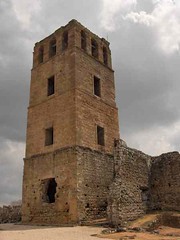
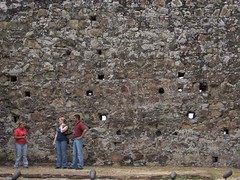
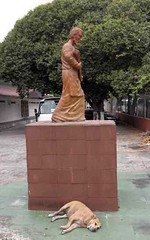
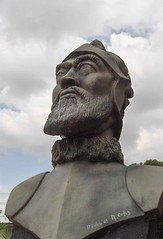
The holes you see in these walls were put there intentionally when the wall was built. Timbers were inserted in the holes, and planks laid across the timbers. Then workmen would use the platform as a scaffold to construct the next level of the wall. Later, the timbers were removed, and the holes plugged with mortar or covered by exterior finishing of the walls.
The city was moved to a more easily defended area called Casco Viejo, and the altar was restored to a newly built church, where it resides to this day.
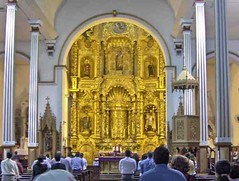
After touring the ruins with a friendly police officer, we drove to the Miraflores locks of the Panama Canal and had a meal in a first-class restaurant overlooking the locks. A large table nearby was occupied by members of the Panamanian legislature and several officials from the People’s Republic of China, all huddled in a meeting that could be bad news for the USA.
When we finished lunch, we went out on the observation platform and watched the slow, carefully synchronized water ballet as a ship was herded into the locks for transit to the Pacific.
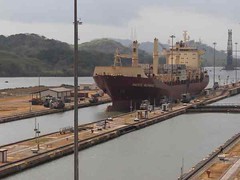
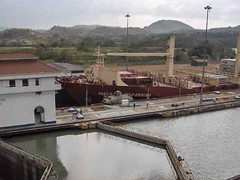

We hopped back in the car and headed down to Casco Viejo, only getting lost in dangerous slums about 5 times. Eventually, we found the Golden Altar and the Plaza de Francia, which marks the site of the rebuilt city. It's an area that used to be a frightening slum, but is undergoing a gradual gentrification. It's full of charming little shops, beautifully-restored villas, and an occasional whorehouse.
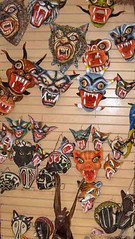
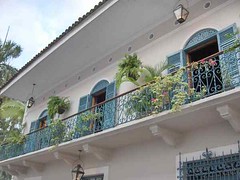
It was a brutally hot day, so we stopped a “raspadero” who made snow-cones (raspados) for us using a weird planing tool to shave ice right off a block. Norberto tried it and failed. The raspadero pours sweet cream over the top of the snow-cone, which gives it a delicious creamy taste.
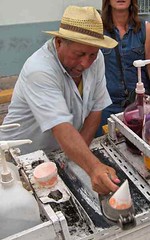
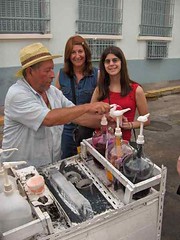
Afterwards, we negotiated the dangerous slums again, only getting lost 3 times, until we found Avenida Balboa, which led us back to the hotel. We were more or less outraged to discover that they close the swimming pool at 5 p.m., so I had to content myself with a cold shower. Unfortunately, I forgot one important fact about Panama: they don’t have cold water here. The coldest it gets is around 86 degrees, which is just cool enough to wash off the sweat, but not nearly as refreshing as a raspado.

No comments:
Post a Comment